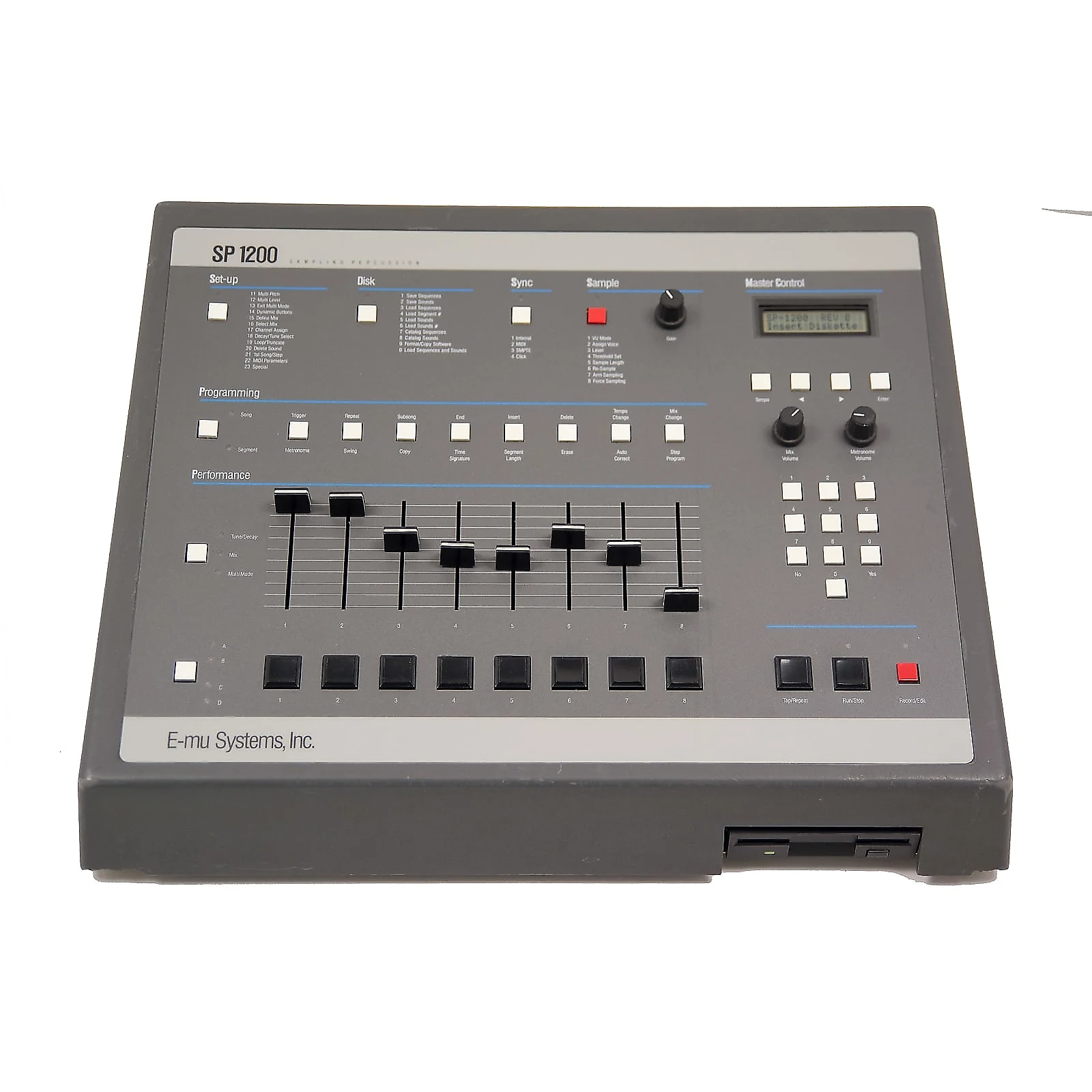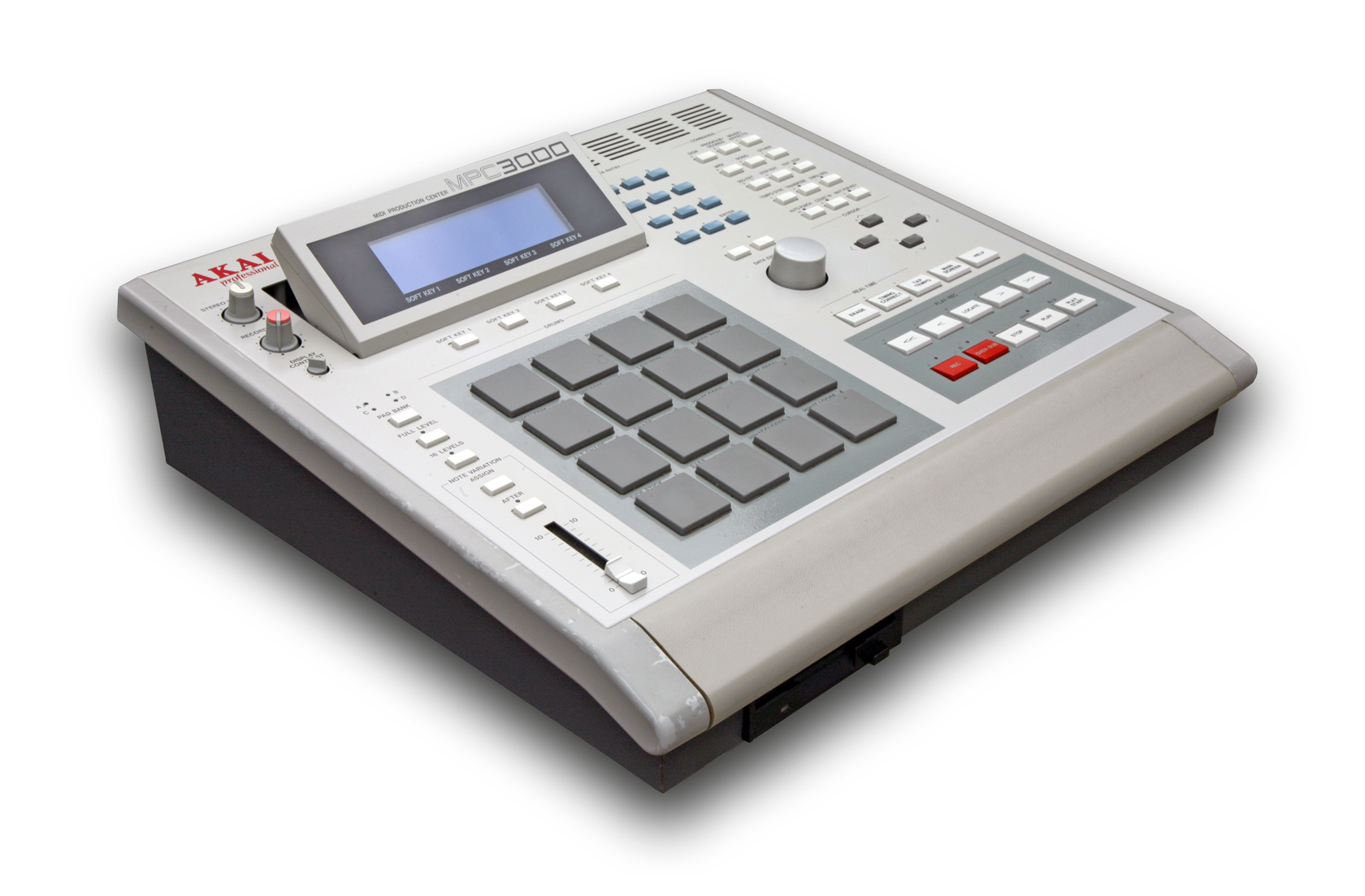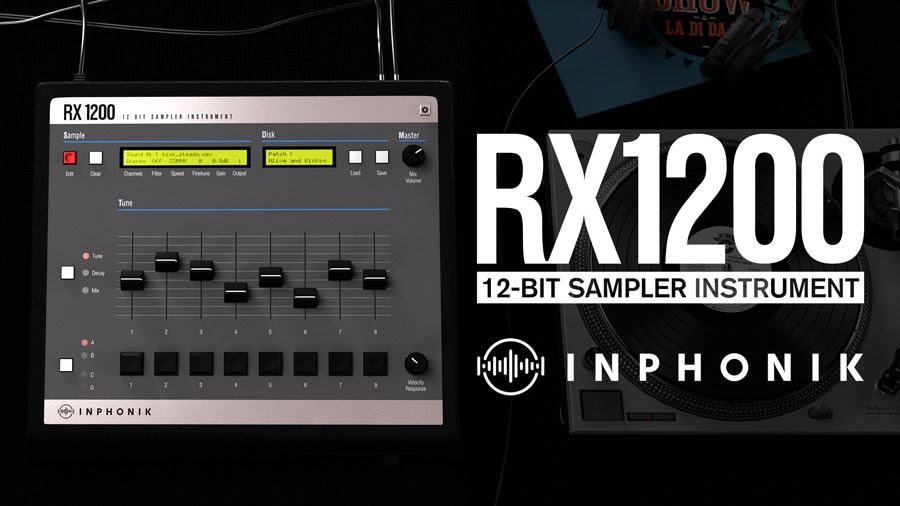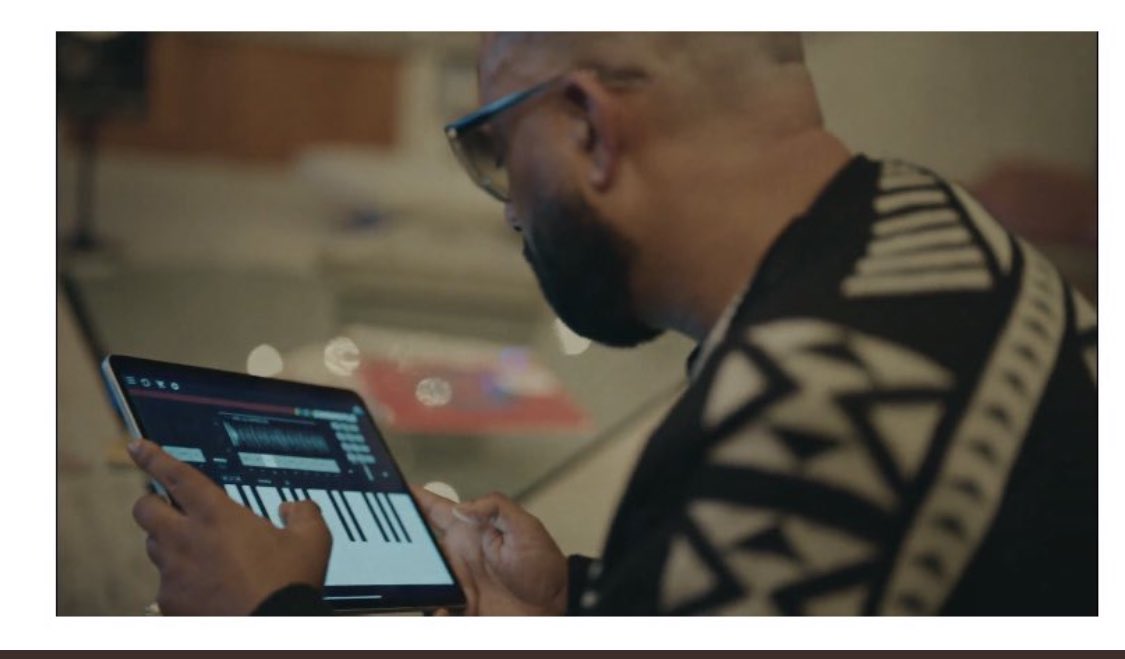Making Hip Hop Beats – Vintage Samplers vs Software Sampling
Of all the music genres Hip-Hop is probably the most reliant on samples. In fact it pretty much introduced sampling to the musical landscape in the late 80s. And the catalyst for this Hip-Hop sampling revolution was the introduction of the first affordable sampling devices. These early samplers allowed beat makers to scoop loops, drum hits or stabs from obscure vinyl records and weave them into exciting new compositions. But in this current age of DAW’s and virtual instruments where entire tracks can be crafted in the box is there any place for vintage hardware samplers? Let us discuss…
Classic Hardware
Classic hardware samplers are very much associated with a particular style of Hip-Hop. That of 90’s Boom Bap. Producers of this era such as DJ Premier, Pete Rock, J Dilla, Large Professor, Q-Tip and The Rza all relied heavily on such vintage samplers. many of these samplers are now in high demand and command high price tags. Here is a rundown of the 3 most coveted samplers amongst Boom Bap heads.
E-mu SP1200

King of the Boom Bap samplers the SP1200 was first launched in 1987. While the SP1200 is primarily a sampling drum machine, hip-hop producers would use it to create whole tracks. It was the workhorse sampling choice of countless high-profile producers during the Renaissance and Boom Bap eras. While it only has 10 seconds of sample time those 10 seconds have a gloriously phat and chunky sound. And It’s this iconic sound, complete with distinctive anti-aliasing artifacts, that went on to influence the very sound of 90’s Boom Bap Hip-Hop. The SP 1200 is therefore a much-coveted object of desire within the Hip-Hop world. As such, a good condition original could set you back as much as five thousand pounds.
Akai MPC 60/3000/2000xl

Hot on the heels of the SP12/SP1200 Akai unveiled its Midi Production Centre (MPC) 60 in 1998. Designed in collaboration with Rodger Linn of Linn Drum fame the MPC 60 came with a more sophisticated set of features not to mention slightly more sample time (up to 26.2 seconds!!!). The introduction of swing enabled you to add a more human feel to your drum programming. This feature would go on to inspire a whole new generation of producers led by the late great J Dilla. Much like the SP1200, vintage MPC samplers are much sought-after objects and still used widely in the making of boom bap hip-hop beats.
Ensoniq ASR10

While the SP1200 and MPC’s were designed as drum machines the ASR10 by Ensoniq was intended to be used as a workstation sampler. As such it’s stacked with many innovative features for the time, including long sample times, sophisticated editing, resampling, sequencing, digital effects and a weighted keyboard. The ASR10 became adopted by numerous iconic producers such as The Rza, Alchemist, Timbaland and later Kanye West.
Software Equivalents
DAW samplers
Most DAWs will come with a native sampler built into the plugin suite. These samplers generally feature a powerful set of features enabling you to effortlessly manipulate samples. In order to record samples into your DAW you will require some form of audio interface. These can vary massively in price. For a comprehensive guide on audio interface’s check out this post.
If you require an even more powerful sampler then Kontakt by Native Instruments is the industry standard. While it offers unrivalled sample shaping features it also comes with an extensive sample library.
Sampler Emulations
For those looking to capture the sound and aesthetic of an original vintage sampler then it may be worth checking out a software emulation. The MPC 2000xl has been re-modeled in software form and is available as a free download here.
The mighty SP has also been cloned as a VST. There are currently two great SP emulations on the market. The eSPi from Low Hiss Systems and the RX1200 from Inphonik. Both of these examples offer a very similar workflow and most importantly sound.

Music making apps
If you’re on a tight budget there are several great app samplers designed for tablet or mobile devices. One of the most popular dedicated samplers and composing app’s is the Koala Sampler. Available for iOS and Android the Koala Sampler offers a staggeringly wide-ranging feature set and enables users to create and mix fully formed sample-based beats. Other great sampling apps worth checking out include the iMPC, Beatmaker 3 and Flip.
And before you discount these options as nothing more than glorified musical toys bear in mind that for the past few years, legendary hip-hop producer Madlib has been making his beats on an iPad using an iOS sampler.

Shootout
So, it’s time to pit old against new! In this showdown, we’ll examine the pros and cons of each option. Keep in mind that everyone’s musical approach and objectives vary, so these points are meant to serve as practical considerations.
Hardware – Pros
- Sound
12bit samplers such as the SP1200 and MPC60 have a distinct sound to them. This sound is highly sought after especially when sampling drums. And when it comes to Boom Bap Hip-Hop it’s all about the drums! - Cool Factor
It’s impossible to deny the fact that using vintage or hardware samplers is pretty damn cool. There is a certain cache associated with using the same original equipment used in your favourite old jams. If you have a presence on social media or make video content then using hardware samplers will potentially boost your status. - Heritage
If you want to feel as though you’re walking in the audio footsteps of hip-hop giants then using a vintage sampler is going to provide you with that feeling. For some producers making hip-hop in the traditional way helps to connect them with the past. - Limitations
This may sound a little strange but there is a considerable cohort of producers that embrace the limitations inherent in hardware samplers. It is often argued that limited sample time and functionality can force you to be more creative. - Investment
With certain vintage samplers gaining cult status, a case could be made that buying a classic sampler is a potential investment. For example, In 10 years the price of a used SP1200 has more than doubled.
Hardware – Cons
- Sample Time
While samplers such as the ASR10 and later MPC models offered longer sampling times, early classics such as the SP1200 gave only 10 precious seconds. - Limited Features
Most vintage samplers provide the basic editing tools necessary to make beats. Later samplers started to introduce time and pitch stretching but it was awfully slow and clunky. Compared to the feature-rich samplers of today, these old samplers were like audio dinosaurs. - Speed of use
Even the quickest-fingered vintage sampling boss would find it hard to chop a sample up as quickly as on modern sampling devices. - Need for additional outboard gear
Unlike software sampling and beat making where everything can be done ‘in the box’ hardware samplers generally require additional outboard gear to obtain comparative results. Samplers with multiple outputs for example will require some sort of mixing desk. Compressors, EQs and effects units are crucial if you intend to recreate the authentic 90’s hip-hop sound. - Maintainance
Vintage equipment can be very temperamental. As many of these samplers are decades old expect there to be the odd technical issue. And with many of the spare parts no longer in production maintaining old gear can prove problematic. - Cost
As previously mentioned, some of the most sought-after classic samplers are in high demand, and consequently, they may be prohibitively expensive.
Software – Pros
- Unlimited Sample Time
In the past producers would have to be careful to conserve precious sample seconds. Tricks such as speeding up samples when recording them in and then pitching them down were common. With software samplers, you are unburdened from such sample time concerns. - Powerful cutting-edge features
Modern software samplers have the power to manipulate samples in ways that would not have been thought possible back in the 90s. Real-time pitch shifting, warping and even stem extraction are just a mouse stroke away. - Storage
Forget inserting multiple 3.5″ floppy disks or connecting noisy Zip drives. Modern DAW-based compositions can be saved in seconds with a click of a button. - Cost
While a computer and DAW can set you back a fair bit, there are numerous very reasonable and even free software sampling solutions available. Especially when it comes to app-based solutions. For instance if you have a modern smartphone you can download the Koala Sampler for under five dollars! - Speed and efficiency
While vintage samplers offer a very tactile and hands-on experience their user interfaces can make sample editing a much longer-winded process than their contemporary counterparts. - Compatability
Using software samplers and DAWs make it easy to collaborate with fellow producers who have the same software. Files and sessions can be easily shared online allowing for great collaborative workflows to develop.
Software – Cons
- Tactile nature
If you’re working entirely within a digital environment or on a device, it may not offer the same tactile, hands-on experience as using a dedicated hardware sampler. There are dedicated midi controllers for DAWS that can help to provide a more tactile music-making experience. - Complexity
Some beat makers can find the wide array of features available with software sampling daunting and overwhelming. Vintage samplers provide a more simplistic sampling experience that may suit some beat makers. - Screen Fatigue
With many of us already spending hours staring at screens at work the last thing you may want to do when in creative music mode is stare at another screen. Using hardware samplers can encourage a healthy dependency on using your ears rather than your screen-tired eyes. - Authenticity
While this one is slightly contentious, there is sometimes a tendency within the hip-hop community to shun DAW-based beat making. It’s not seen by many as the traditional method of crafting hip-hop beats and those using DAWs may find themselves having to explain their actions. - Sound
Some would argue that vintage samplers have a very distinct sound that is perfect suited for hip-hop. this is especially the case with 12-bit samplers. While these samplers do undoubtedly have their own unique sound it’s worth noting that it’s not impossible to closely emulate this sound in the digital environment.
Summary
Anyone claiming there’s a right or wrong way to produce music should be disregarded. Your approach should be wholly guided by your personal musical goals and objectives. Researching different methods is important, but ultimately, the decision on your workflow should be yours. The main objective is to find a method you enjoy, as making music should be fun. While there are significant differences between creating boom bap digitally versus using original hardware samplers, the key is to choose the method that works best for you.
Remember – RouteNote Create subscriptions start from as little as $2.99. You also get 10 FREE credits to spend on samples along with access to our FREE sample pack bundle when you sign-up!
